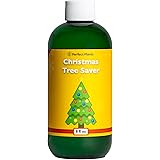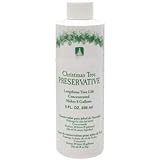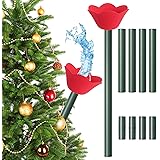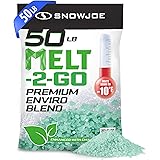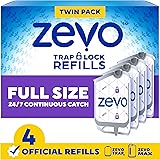Welcome to the definitive guide to diatomaceous earth (DE) in 2025! This seemingly simple substance, composed of the fossilized remains of tiny aquatic organisms called diatoms, holds a surprising array of applications. From pest control and gardening to potential health benefits and household uses, DE is a versatile and increasingly popular natural alternative.
But with its growing popularity, understanding its various types, uses, benefits, and, most importantly, safety precautions is crucial. This comprehensive guide provides up-to-date information, incorporating current trends, statistics, and regulations, ensuring you have the knowledge to use diatomaceous earth effectively and safely.
What is Diatomaceous Earth?
Diatomaceous earth is a naturally occurring, soft, siliceous sedimentary rock that crumbles easily into a fine white to off-white powder. It’s composed of the fossilized remains of diatoms, a type of hard-shelled algae.
These diatoms accumulated over millions of years in the sediments of oceans, lakes, and other bodies of water. The specific composition of DE can vary depending on its source, influencing its properties and suitability for different applications.
Types of Diatomaceous Earth
Understanding the different types of diatomaceous earth is crucial for selecting the right product for your intended use. The two main types are:
- Food Grade Diatomaceous Earth: This type is safe for human and animal consumption. It typically contains less than 1% crystalline silica. Food grade DE is registered with the EPA and is carefully processed to meet stringent standards.
- Filter Grade/Industrial Grade Diatomaceous Earth: This type is not safe for human or animal consumption. It contains a higher percentage of crystalline silica (often over 60%), which can be harmful if inhaled or ingested. It’s commonly used in swimming pool filters, industrial absorbents, and other filtration applications. This type is often heat-treated (calcined) to alter its structure and improve its filtering properties.
Always check the label carefully to ensure you are using the correct type of DE for your intended purpose. Never ingest or allow pets to ingest filter grade DE.
Read More: Odor Absorbing Indoor Plants: Pros and Cons
Composition and Properties
The key component of diatomaceous earth is silica (SiO2), which typically makes up 80-90% of its composition. Other components can include:
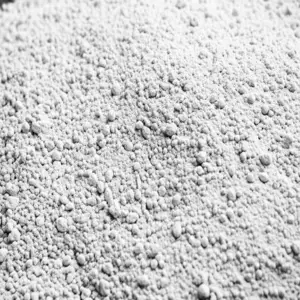
food grade
- Aluminum oxide (Al2O3)
- Iron oxide (Fe2O3)
- Calcium oxide (CaO)
- Magnesium oxide (MgO)
- Trace minerals
The unique properties of DE, stemming from the microscopic structure of the diatom shells, include:
- High porosity: Diatoms have intricate porous structures, giving DE a large surface area and excellent absorption capabilities.
- Abrasiveness: The sharp edges of the fossilized diatoms can be abrasive to the exoskeletons of insects.
- Inertness: DE is chemically inert, meaning it doesn’t readily react with other substances.
- High absorption capacity: DE can absorb significant amounts of liquids, making it useful as a drying agent.
Read More: Why Is My Evergreen Arborvitae Turning Yellow? Exploring Causes And Solutions
Uses of Diatomaceous Earth
The versatility of diatomaceous earth stems from its unique properties. Its applications span a wide range of fields, from agriculture and pest control to health and household uses.
Pest Control
One of the most popular uses of diatomaceous earth is as a natural insecticide. Its effectiveness lies in its abrasive nature. When insects crawl over DE, the tiny, sharp edges of the diatom shells damage their waxy outer coating (exoskeleton), leading to dehydration and eventual death. It’s a physical mode of action, not a chemical one, which means insects are less likely to develop resistance to it.
Common Pests Controlled by Diatomaceous Earth
- Ants: DE can be applied around ant trails and entry points.
- Bed Bugs: Apply carefully to cracks and crevices where bed bugs hide. (Professional pest control is often recommended for bed bug infestations)
- Fleas: Dust DE on pet bedding, carpets, and areas where fleas are present. Always use food-grade DE for pets and avoid getting it in their eyes or nose.
- Cockroaches: Apply to cracks and crevices, under appliances, and other areas where cockroaches are commonly found.
- Silverfish: Dust in areas where silverfish are seen, such as bookshelves and closets.
- Earwigs: Apply around the perimeter of your house and in garden areas.
- Spiders: Dust in corners, along baseboards, and in other areas where spiders are present.
- Crickets: Apply around the foundation of your home and in garden areas.
- Dust Mites: Sprinkle on mattresses and carpets, leave for a few hours, then vacuum thoroughly.
- Garden Pests (Aphids, Caterpillars, Slugs, Snails): Dust directly on plants, being careful to avoid harming beneficial insects like bees. Consider applying in the evening when bees are less active.
How to Apply Diatomaceous Earth for Pest Control
The effectiveness of DE for pest control depends on proper application:
- Choose the right type: Always use food-grade DE for pest control around humans and animals.
- Apply a thin layer: A thin, even layer is more effective than a thick pile. The goal is for the insects to come into contact with the DE as they move around.
- Apply in dry conditions: DE is most effective when dry. It loses its abrasive properties when wet. Reapply after rain or if the area becomes damp.
- Target problem areas: Focus on areas where pests are known to be present, such as cracks, crevices, entry points, and hiding places.
- Use appropriate tools: A duster or puffer bottle can help distribute the DE evenly.
- Wear a dust mask: Although food-grade DE is considered safe, it’s still a good idea to wear a dust mask to avoid inhaling the fine particles.
Gardening
Diatomaceous earth is a valuable tool for organic gardeners. Its uses extend beyond pest control to soil amendment and nutrient availability.
Pest Control in the Garden
As mentioned earlier, DE effectively controls many common garden pests. Dusting it directly on plants can help protect them from aphids, caterpillars, slugs, snails, and other insects. It’s particularly useful for controlling crawling insects that come into direct contact with the DE.
Soil Amendment
DE can improve soil drainage and aeration, especially in heavy clay soils. Its porous structure helps to break up compacted soil, allowing for better water and air penetration. This can promote healthier root growth and improve overall plant health.
Nutrient Availability
While DE itself doesn’t provide significant nutrients, its ability to improve soil structure can enhance the availability of existing nutrients. Better soil aeration allows plant roots to absorb nutrients more efficiently. Some studies suggest that the silica in DE may also play a role in strengthening plant cell walls, making them more resistant to disease and pests.
Using Diatomaceous Earth in Hydroponics
The absorbent properties of DE make it a valuable addition to hydroponic growing systems. Its high porosity helps retain moisture and nutrients for the plants’ roots. It also improves aeration, preventing root rot which can be a common problem in hydroponic setups. DE can be used as a growing medium on its own or mixed with other materials like perlite or vermiculite.
Animal Health
Food-grade diatomaceous earth is often used as a supplement for livestock, poultry, and pets. While the scientific evidence supporting all the claimed benefits is still emerging, many pet owners and farmers swear by its effectiveness.
Deworming
One of the most common uses of DE in animal health is as a natural dewormer. The theory is that the abrasive nature of DE can damage the exoskeletons of internal parasites, leading to their death. While some anecdotal evidence supports this claim, scientific studies have yielded mixed results. Some studies have shown a reduction in parasite loads in livestock treated with DE, while others have found no significant effect. It’s crucial to consult with a veterinarian before using DE as a dewormer for your animals, as it may not be effective against all types of parasites and should not replace conventional deworming medications when necessary.
Fly Control
DE can be used to control flies in and around animal enclosures. Dusting it on bedding, manure piles, and other areas where flies breed can help reduce their populations. The DE works by drying out fly larvae and disrupting their life cycle.
Nutritional Supplement
Some people add food-grade DE to their animals’ feed as a source of silica. Silica is believed to be beneficial for bone and joint health, as well as coat and hoof quality. However, more research is needed to confirm these benefits.
Specific Animal Uses
- Chickens: DE can be added to chicken feed to help control internal parasites and improve eggshell quality. It can also be used in dust baths to help control external parasites like mites and lice.
- Dogs and Cats: DE can be added to pet food to help control internal parasites. It can also be dusted on their fur to control fleas. Be very careful to avoid getting DE in their eyes or nose.
- Livestock (Cattle, Horses, Pigs): DE can be added to livestock feed to help control internal parasites and improve overall health. It can also be used to control flies in and around barns and other animal enclosures.
Always consult with a veterinarian before using DE as a health supplement or treatment for your animals.
Human Health
The use of diatomaceous earth for human health is a topic of much debate. While many people claim various health benefits, scientific evidence supporting these claims is often limited or inconclusive. It’s essential to approach these claims with a critical eye and consult with a healthcare professional before using DE for any health-related purpose.
Detoxification
One of the most common claims is that DE can help detoxify the body by absorbing toxins, heavy metals, and other harmful substances in the digestive tract. The theory is that the porous structure of DE acts like a sponge, trapping these substances and allowing them to be eliminated from the body. However, there is limited scientific evidence to support this claim. Some small studies have suggested that DE may help reduce cholesterol levels, but more research is needed.
Digestive Health
Some people believe that DE can improve digestive health by promoting regularity and reducing inflammation in the gut. The abrasive nature of DE may help to gently cleanse the intestinal walls, removing buildup and promoting better nutrient absorption. However, there is limited scientific evidence to support these claims. Some people have reported experiencing constipation or other digestive issues when taking DE, so it’s important to start with a small dose and increase gradually as tolerated.
Skin and Hair Health
DE is sometimes used in skincare products and is claimed to improve skin and hair health. The silica in DE is believed to be beneficial for collagen production, which can help to improve skin elasticity and reduce wrinkles. It’s also claimed to help strengthen hair and nails. However, there is limited scientific evidence to support these claims. DE can be abrasive and may irritate sensitive skin, so it’s important to test it on a small area of skin before applying it to the entire face or body.
Cholesterol Reduction
As mentioned above, some small studies have suggested that DE may help reduce cholesterol levels. A 2018 study published in the *European Journal of Nutrition* found that taking DE supplements for 12 weeks significantly reduced total cholesterol, LDL cholesterol, and triglycerides in participants with high cholesterol. However, this was a small study with a limited number of participants, and more research is needed to confirm these findings. If you have high cholesterol, it’s important to consult with a healthcare professional about the best treatment options for you.
Read More: How Fast Do Snake Plants Grow? A Complete Guide
Important Considerations for Human Consumption
- Use only food-grade DE: Never consume filter grade DE, as it contains high levels of crystalline silica, which can be harmful.
- Start with a small dose: Begin with a teaspoon or less per day and gradually increase as tolerated.
- Mix with water or juice: DE can be difficult to swallow on its own. Mix it with plenty of water or juice to help it go down easier.
- Drink plenty of water: DE can be dehydrating, so it’s important to drink plenty of water throughout the day.
- Be aware of potential side effects: Some people may experience constipation, bloating, or other digestive issues when taking DE.
- Consult with a healthcare professional: It’s always a good idea to consult with a healthcare professional before taking DE, especially if you have any underlying health conditions or are taking any medications.
Read More: How To Prune Monstera Deliciosa: Practical Guide
Household Uses
Beyond pest control and health applications, diatomaceous earth can be used in various ways around the home.
Cleaning Agent
The abrasive properties of DE make it a mild cleaning agent. It can be used to scrub surfaces, remove stains, and polish metal. However, it’s important to use caution when cleaning delicate surfaces, as DE can scratch them. It’s best to test it on a small, inconspicuous area first.
Odor Control
DE can absorb odors, making it useful for controlling smells in refrigerators, litter boxes, and other areas. Simply place a small bowl of DE in the affected area to help absorb odors.
Spill Absorption
DE is highly absorbent and can be used to clean up spills, such as oil, grease, and other liquids. Simply sprinkle DE on the spill, let it absorb the liquid, and then sweep it up.
Natural Deodorizer
Due to its absorbent properties, DE can be used as a natural deodorizer for carpets and rugs. Sprinkle a thin layer over the carpet, let it sit for a few hours (or overnight), then vacuum thoroughly. This can help eliminate pet odors, musty smells, and other unwanted scents.
Silver Polish
Mix DE with water to form a paste. Gently rub the paste onto silver items to remove tarnish. Rinse thoroughly and dry with a soft cloth. Be cautious as DE is abrasive and can scratch delicate silver if you apply too much pressure.
Industrial Uses
Diatomaceous earth has numerous industrial applications, largely due to its filtering and absorbent properties.
Filtration
DE is widely used as a filter aid in various industries, including food and beverage processing, pharmaceuticals, and water treatment. Its porous structure allows it to trap fine particles, resulting in clearer and purer liquids. For example, it is commonly used to filter beer, wine, and juices.
Absorbent
DE is an effective absorbent for spills and leaks in industrial settings. It can soak up oil, chemicals, and other liquids, making it easier to clean up and dispose of waste materials. Its absorbent properties also make it useful in the production of kitty litter and other absorbent products.
Construction Materials
DE is sometimes added to cement and other building materials to improve their strength and durability. It can also help to reduce shrinkage and cracking.
Catalyst Support
Due to its high surface area and inertness, DE is used as a catalyst support in various chemical reactions. It provides a stable and porous matrix for the catalyst, allowing for efficient and selective reactions.
Benefits of Using Diatomaceous Earth
The appeal of diatomaceous earth lies in its natural origins and versatility. Compared to synthetic alternatives, it offers several potential benefits:
- Natural and Non-Toxic: Food-grade DE is generally considered safe for humans and animals when used properly. It’s a natural alternative to chemical pesticides and other synthetic products.
- Effective Pest Control: DE provides a physical barrier against pests, making it less likely for them to develop resistance.
- Versatile Applications: DE can be used in a wide range of applications, from pest control and gardening to health and household uses.
- Environmentally Friendly: DE is a naturally occurring substance that is biodegradable and does not persist in the environment.
- Cost-Effective: DE is relatively inexpensive compared to many synthetic alternatives.
Safety Tips When Using Diatomaceous Earth
While food-grade diatomaceous earth is generally considered safe, it’s essential to take precautions to avoid potential health risks.
Inhalation Hazards
The most significant safety concern associated with DE is inhalation. The fine particles can irritate the lungs and respiratory system. Prolonged or repeated exposure to crystalline silica, which is present in some types of DE (especially filter grade), can lead to silicosis, a serious lung disease.
Precautions
- Wear a dust mask: Always wear a dust mask or respirator when handling DE, especially when applying it in large quantities or in enclosed spaces. An N95 mask is recommended.
- Avoid creating dust clouds: Handle DE carefully to avoid creating dust clouds.
- Ventilate the area: If applying DE indoors, ensure adequate ventilation.
- Avoid prolonged exposure: Limit your exposure to DE dust as much as possible.
Skin and Eye Irritation
DE can be drying and irritating to the skin and eyes. The abrasive particles can cause redness, itching, and discomfort.
Precautions
- Wear gloves: Wear gloves when handling DE to protect your skin.
- Avoid contact with eyes: Avoid getting DE in your eyes. If contact occurs, rinse thoroughly with water.
- Wash hands after handling: Wash your hands thoroughly with soap and water after handling DE.
- Use moisturizer: If your skin becomes dry or irritated, apply a moisturizer.
Ingestion Considerations
While food-grade DE is considered safe for consumption, it can still cause digestive upset in some people.
Precautions
- Start with a small dose: Begin with a small dose and gradually increase as tolerated.
- Drink plenty of water: DE can be dehydrating, so it’s important to drink plenty of water throughout the day.
- Be aware of potential side effects: Some people may experience constipation, bloating, or other digestive issues when taking DE.
- Consult with a healthcare professional: It’s always a good idea to consult with a healthcare professional before taking DE, especially if you have any underlying health conditions or are taking any medications.
Choosing the Right Product
As emphasized throughout this guide, selecting the correct type of diatomaceous earth is paramount for safety.
Precautions
- Read the label carefully: Always read the label carefully to ensure you are using the correct type of DE for your intended purpose.
- Buy from reputable sources: Purchase DE from reputable sources to ensure its quality and purity.
- Store properly: Store DE in a dry, airtight container to prevent it from absorbing moisture.
Safety for Pets
While DE is often used for pet health, specific precautions are necessary.
Precautions
- Use only food-grade DE: Always use food-grade DE for pets.
- Avoid getting DE in their eyes or nose: Be very careful to avoid getting DE in your pet’s eyes or nose, as it can be irritating.
- Monitor for adverse reactions: Monitor your pet for any adverse reactions, such as skin irritation or digestive upset.
- Consult with a veterinarian: It’s always a good idea to consult with a veterinarian before using DE on your pets, especially if they have any underlying health conditions.
Diatomaceous Earth: Current Trends and Statistics (2024)
The market for diatomaceous earth is experiencing steady growth, driven by increasing awareness of its diverse applications and the growing demand for natural and organic products. As of 2024, several trends and statistics highlight the evolving landscape of DE usage:
Market Growth
The global diatomaceous earth market is projected to reach significant numbers by 2028, driven by demand in agriculture, water treatment, and animal feed sectors. The rise in organic farming practices and stringent regulations on chemical pesticides are fueling the demand for DE as a natural alternative.
Key Statistics
- Agriculture Sector Dominance: The agriculture sector holds the largest share in the DE market, owing to its use as a soil amendment, insecticide, and animal feed additive.
- Water Treatment Expansion: The increasing demand for clean water and stringent environmental regulations are driving the use of DE in water filtration processes.
- Regional Growth: North America and Europe are major markets for DE, with significant growth potential in Asia-Pacific due to increasing agricultural activities and awareness of organic farming practices.
- E-commerce Influence: Online retail channels are playing an increasingly important role in the distribution of DE, providing consumers with convenient access to a wide range of products.
Emerging Trends
- Increased Use in Pet Care: DE is gaining popularity as a natural flea and tick treatment for pets, driving growth in the pet care sector.
- Innovative Product Formulations: Manufacturers are developing innovative DE formulations, such as liquid DE and DE-based sprays, to enhance its ease of use and effectiveness.
- Focus on Sustainability: There is a growing emphasis on sustainable sourcing and production practices in the DE industry.
- Research and Development: Ongoing research is exploring new applications of DE in areas such as drug delivery, biomedical engineering, and energy storage.
Stay updated on the latest market trends and research findings to make informed decisions about using DE in your specific applications.
Regulations and Guidelines
The use of diatomaceous earth is subject to various regulations and guidelines, depending on the specific application and region. Understanding these regulations is crucial for ensuring compliance and using DE safely and effectively.
EPA Regulations
In the United States, the Environmental Protection Agency (EPA) regulates the use of DE as a pesticide. Food-grade DE is registered with the EPA for use as an insecticide against various pests. The EPA requires that all DE products used as pesticides be labeled with specific instructions for use and safety precautions.
FDA Regulations
The Food and Drug Administration (FDA) regulates the use of DE in food and animal feed. Food-grade DE is generally recognized as safe (GRAS) for use in food and animal feed, provided it meets certain purity standards. The FDA also regulates the labeling of DE products intended for human or animal consumption.
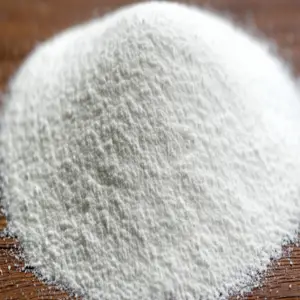
insect control
International Regulations
The regulations governing the use of DE vary from country to country. In the European Union, DE is regulated under the Biocidal Products Regulation (BPR). The BPR requires that all DE products used as biocides (e.g., insecticides) be authorized by the relevant national authorities.
Labeling Requirements
All DE products must be labeled with specific information, including the type of DE (food grade or filter grade), the intended use, instructions for use, safety precautions, and the manufacturer’s contact information. It’s crucial to read the label carefully before using any DE product and follow the instructions provided.
Organic Certification
Food-grade DE is often used in organic farming and gardening. To be certified organic, DE products must meet the standards set by the relevant organic certification agency. These standards typically require that the DE be sourced from natural deposits and be free of synthetic additives.
Always check the local regulations and guidelines before using DE in your specific application to ensure compliance and safety.
Diatomaceous Earth: Real-World Examples
To further illustrate the practical applications of diatomaceous earth, here are some real-world examples of how it’s used in various industries and settings:
Agriculture
A farmer in California uses food-grade DE as a soil amendment in his organic vegetable farm. He mixes DE into the soil before planting to improve drainage and aeration. He also dusts his crops with DE to control aphids and other pests, reducing his reliance on chemical pesticides. He reports healthier plants and higher yields since incorporating DE into his farming practices.
Animal Health
A horse owner in Kentucky adds food-grade DE to her horses’ feed to help control internal parasites. She also uses DE to control flies in and around the stables. She believes that DE has improved her horses’ overall health and reduced the need for conventional deworming medications. She emphasizes that she works closely with her veterinarian to monitor her horses’ health and adjust her treatment plan as needed.
Home Pest Control
A homeowner in Florida uses DE to control cockroaches in her kitchen. She applies a thin layer of DE to cracks and crevices, under appliances, and other areas where cockroaches are commonly found. She reports a significant reduction in cockroach activity since using DE.
Water Filtration
A municipal water treatment plant uses DE as a filter aid to remove impurities from drinking water. The DE helps to trap fine particles, resulting in cleaner and safer water for the community. This is a common practice in many water treatment facilities around the world.
Food and Beverage Processing
A winery in France uses DE to filter its wine. The DE helps to remove sediment and other impurities, resulting in a clearer and more stable wine. This is a standard practice in the wine industry to ensure the quality of the final product.
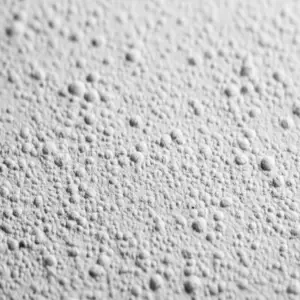
natural pesticide
Personal Care
A small business owner in Oregon creates and sells natural skincare products. She includes DE in her facial scrubs and masks for its gentle exfoliating properties. She markets her products as a natural and effective way to improve skin texture and appearance.
FAQ: Frequently Asked Questions About Diatomaceous Earth
Here are some frequently asked questions about diatomaceous earth, along with detailed answers to address common concerns and misconceptions:
What is the difference between food-grade and filter-grade diatomaceous earth?
Food-grade DE is safe for human and animal consumption and contains less than 1% crystalline silica. Filter-grade DE is not safe for consumption and contains a much higher percentage of crystalline silica (often over 60%). Filter-grade DE is typically heat-treated and used for industrial purposes, such as filtration.
Is diatomaceous earth safe for pets?
Food-grade DE is generally considered safe for pets when used properly. It can be used to control fleas, ticks, and internal parasites. However, it’s important to avoid getting DE in your pet’s eyes or nose, and to monitor for any adverse reactions. Consult with a veterinarian before using DE on your pets, especially if they have any underlying health conditions.
How does diatomaceous earth kill insects?
DE kills insects by damaging their waxy outer coating (exoskeleton). The tiny, sharp edges of the diatom shells abrade the exoskeleton, leading to dehydration and eventual death. It’s a physical mode of action, not a chemical one.
Does diatomaceous earth expire?
DE does not technically expire, but it can lose its effectiveness if it becomes contaminated with moisture. Store DE in a dry, airtight container to prevent it from clumping and losing its abrasive properties.
How long does it take for diatomaceous earth to kill insects?
The time it takes for DE to kill insects depends on the type of insect, the amount of DE they are exposed to, and environmental conditions. Generally, it takes a few hours to a few days for DE to kill insects.
Can I use diatomaceous earth in my swimming pool filter?
Yes, but only use filter-grade DE specifically designed for swimming pool filters. Do not use food-grade DE in your pool filter, as it is not effective for filtration purposes and can damage your filter.
Is diatomaceous earth safe to breathe?
While food-grade DE is considered relatively safe, inhaling the fine particles can irritate the lungs and respiratory system. It’s important to wear a dust mask or respirator when handling DE, especially when applying it in large quantities or in enclosed spaces. Prolonged or repeated exposure to crystalline silica, which is present in some types of DE (especially filter grade), can lead to silicosis, a serious lung disease.
Can I use diatomaceous earth on my skin?
Some people use DE on their skin for its exfoliating properties. However, DE can be abrasive and may irritate sensitive skin. It’s important to test it on a small area of skin before applying it to the entire face or body. Avoid using DE on broken or irritated skin.
Where can I buy diatomaceous earth?
DE is widely available at garden centers, hardware stores, pet supply stores, and online retailers. Ensure you purchase from a reputable source to guarantee the quality and purity of the product.
What are the side effects of taking diatomaceous earth internally?
Some people may experience constipation, bloating, or other digestive issues when taking DE internally. It’s important to start with a small dose and increase gradually as tolerated. Drink plenty of water to prevent dehydration. Consult with a healthcare professional before taking DE, especially if you have any underlying health conditions or are taking any medications.
Conclusion: Final Thoughts on Diatomaceous Earth
Diatomaceous earth stands out as a remarkably versatile substance, offering a natural alternative to many conventional products. From pest control in gardens and homes to potential health benefits and industrial applications, its uses are varied and continually being explored. As we’ve seen, the key to harnessing the power of DE lies in understanding its different types, applications, and, most importantly, safety precautions. Choosing the correct grade, applying it properly, and prioritizing safety measures like wearing a dust mask are crucial for maximizing its benefits while minimizing potential risks.
The increasing popularity of DE reflects a growing trend towards natural and sustainable solutions. Consumers are becoming more aware of the potential environmental and health impacts of synthetic chemicals and are actively seeking safer alternatives. Diatomaceous earth, with its natural origins and diverse applications, fits well into this trend. However, it’s essential to approach the use of DE with a balanced perspective, relying on scientific evidence and expert advice whenever possible. While anecdotal evidence and personal experiences can be valuable, they should not replace the need for rigorous research and professional guidance, especially when it comes to health-related claims. As research continues to unveil new applications and refine our understanding of its effects, diatomaceous earth is likely to remain a valuable resource for a wide range of needs. Always stay informed, prioritize safety, and use this versatile substance responsibly.
Auto Amazon Links: No products found.
Perfect Plants Christmas Tree Saver 8oz. | Easy Use Xmas Tree Preserver Food | Have Healthy Green Christmas Trees All Holiday Season
$9.97 (as of December 16, 2025 05:22 GMT +00:00 - More info- Product prices and availability are accurate as of the date/time indicated and are subject to change. Any price and availability information displayed on [relevant Amazon Site(s), as applicable] at the time of purchase will apply to the purchase of this product.
FirEver Pure Christmas Tree Food | Preserver Additive & Season Extender for Live Xmas Trees | Keep It Green, Reduce Needle-Drop | Miracle Freshness (8 oz)
$14.99 (as of December 16, 2025 05:22 GMT +00:00 - More info- Product prices and availability are accurate as of the date/time indicated and are subject to change. Any price and availability information displayed on [relevant Amazon Site(s), as applicable] at the time of purchase will apply to the purchase of this product.
Rocky Mountain Goods Christmas Tree Food - 8 oz Tree Preservative - Reduce Needle Drop - Greener Scent - Fir, Pine, Spruce Trees - Extend Tree Life
$9.95 (as of December 16, 2025 05:22 GMT +00:00 - More info- Product prices and availability are accurate as of the date/time indicated and are subject to change. Any price and availability information displayed on [relevant Amazon Site(s), as applicable] at the time of purchase will apply to the purchase of this product.
EZMeetU Christmas Tree Watering Funnel, 47 Inch Flower Shape Adjustable 6 Section Design, Christmas Tree Watering System, Christmas Tree Waterer, Long Funnel Wide Opening Reusable, Plant Watering Tool
$16.99 (as of December 16, 2025 05:22 GMT +00:00 - More info- Product prices and availability are accurate as of the date/time indicated and are subject to change. Any price and availability information displayed on [relevant Amazon Site(s), as applicable] at the time of purchase will apply to the purchase of this product.
VICAMB 39.3 Inch Christmas Tree Watering Funnel,Christmas Tree Watering System Device,Long Tree Watering Funnel Spout for Indoor Outdoor Xmas Tree
$17.99 (as of December 16, 2025 05:22 GMT +00:00 - More info- Product prices and availability are accurate as of the date/time indicated and are subject to change. Any price and availability information displayed on [relevant Amazon Site(s), as applicable] at the time of purchase will apply to the purchase of this product.
Snow Joe Premium Enviro Blend Ice Melt, Green-Coated Deicer Crystals, 50 lb - Safer Melter for Vegetation, Concrete & Metals w/ Anti-Corrosion Calcium Magnesium Acetate
$32.97 (as of December 12, 2025 19:27 GMT +00:00 - More info- Product prices and availability are accurate as of the date/time indicated and are subject to change. Any price and availability information displayed on [relevant Amazon Site(s), as applicable] at the time of purchase will apply to the purchase of this product.
Muddy Mat® Shown on TV Super Absorbent Microfiber Dog Door Mat for Muddy Paws, Non-Slip Washable Pet Rug, Quick Dry Chenille Entryway Carpet, Machine Washable Indoor Outdoor mat, Grey 30"x19"
$24.95 (as of December 12, 2025 19:27 GMT +00:00 - More info- Product prices and availability are accurate as of the date/time indicated and are subject to change. Any price and availability information displayed on [relevant Amazon Site(s), as applicable] at the time of purchase will apply to the purchase of this product.
ivtivfu Rolling Grill Basket, Removable Wooden Handle, 304 Stainless Steel, Nesting BBQ Tools, Smoker Grilling Accessories for Vegetable, Outdoor Cooking Camping, Birthday Gifts for Men Dad Husband
$25.99 (as of December 12, 2025 19:27 GMT +00:00 - More info- Product prices and availability are accurate as of the date/time indicated and are subject to change. Any price and availability information displayed on [relevant Amazon Site(s), as applicable] at the time of purchase will apply to the purchase of this product.
XXXFLOWER Plant Terrarium with Wooden Stand, Air Planter Bulb Glass Vase Metal Swivel Holder Retro Tabletop for Hydroponics Home Garden Office Decoration - 3 Bulb Vase
$18.98 (as of December 12, 2025 19:27 GMT +00:00 - More info- Product prices and availability are accurate as of the date/time indicated and are subject to change. Any price and availability information displayed on [relevant Amazon Site(s), as applicable] at the time of purchase will apply to the purchase of this product.
Zevo Flying Insect Trap Official Refill Cartridges - Fits Both Zevo Trap & MAX Indoor Fly Trap - Authentic Trap+Lock Technology to Catch Gnats, House & Fruit Flys (4 Official Refill Cartridges)
$14.97 (as of December 12, 2025 19:27 GMT +00:00 - More info- Product prices and availability are accurate as of the date/time indicated and are subject to change. Any price and availability information displayed on [relevant Amazon Site(s), as applicable] at the time of purchase will apply to the purchase of this product.


